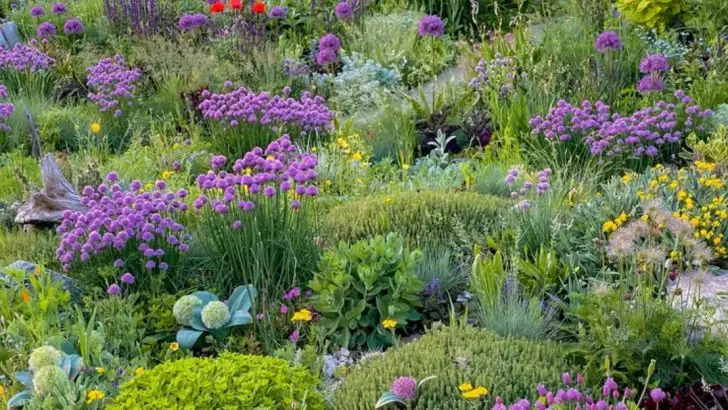Not all gardens need straight lines or raised frames. I started experimenting with a borderless bed—a planting layout that spills gently into paths, fences, even the lawn—and the result was a space that felt wilder, fuller, and more alive.
Without hard edges, plants begin to self-select their zones, follow the light, and interact more naturally with pollinators and soil organisms. It’s a way of letting the garden breathe beyond design, while still being intentional.
In this piece, I’ll show you how to build a bed without borders, the best plants for soft expansion, and why giving up control at the edges might be the most powerful design choice you make.
Wildflower Meadows

A stroll through a wildflower meadow feels like stepping into a vibrant painting. The unrestrained growth of poppies, daisies, and cornflowers creates a patchwork of colors. These meadows require minimal maintenance, thriving with little intervention. They attract bees, butterflies, and other pollinators, bringing life to the garden. By letting nature take its course, you encourage a rich biodiversity. Consider including native species to support local wildlife. Embrace the beauty of imperfection, as each season brings a new palette. This approach fosters a connection with nature, celebrating the changing beauty of each bloom.
Cascading Water Features

The soothing sound of water cascading over rocks brings tranquility. This feature seamlessly integrates with the garden, creating a focal point. Water features attract birds and other wildlife, offering a refreshing drink or a place to bathe. Opt for a solar-powered pump to enhance sustainability. The gentle flow can mask urban noise, creating a peaceful retreat. Experiment with different rock sizes and arrangements to achieve a natural look. Surround the area with moisture-loving plants. This addition not only enhances aesthetics but also supports a thriving ecosystem, making it a delightful centerpiece.
Edible Borders
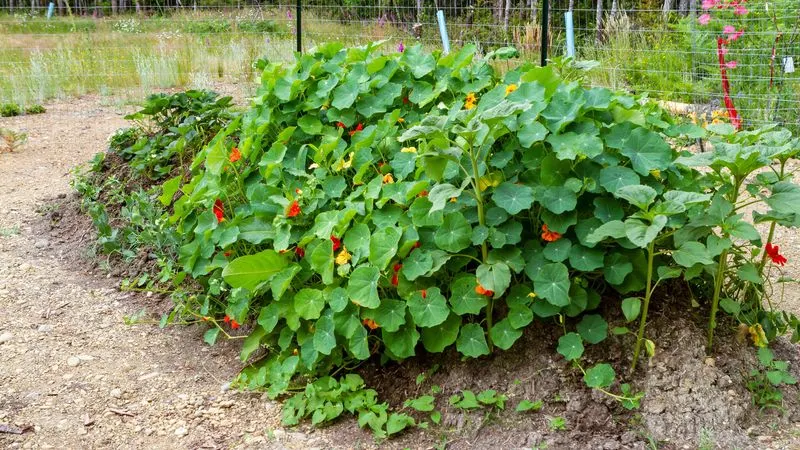
Imagine stepping into your garden and picking fresh herbs for dinner. Edible borders are as practical as they are beautiful. Plant a mix of herbs, vegetables, and edible flowers for a sensory feast. This approach maximizes space, ideal for small gardens. It encourages sustainable living and reduces grocery trips. Choose plants with varying heights and textures for visual appeal. The fragrance from herbs like basil and mint enhances the garden’s atmosphere. This design invites you to engage with your garden daily, turning harvesting into a gratifying ritual. It’s a feast for both eyes and palate.
Living Walls
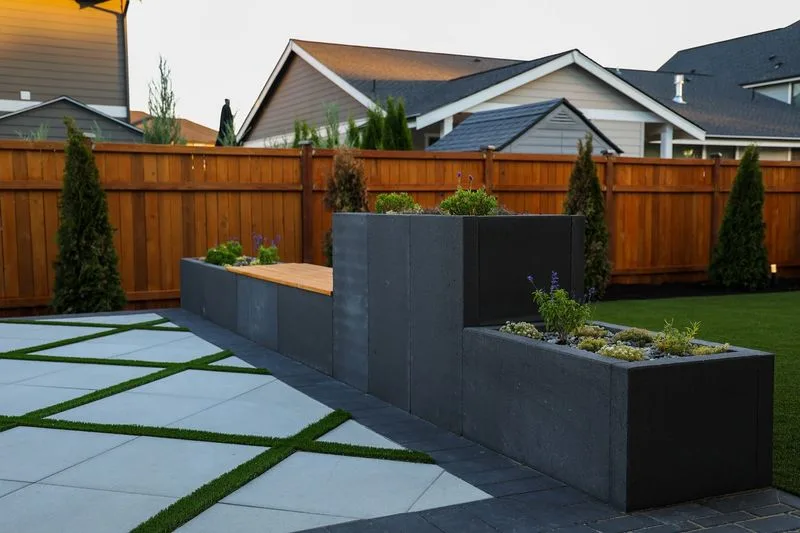
Transform bare walls into living art with vertical gardens. These installations save space and improve air quality. Perfect for urban settings, they bring greenery to areas lacking ground space. Choose a mix of ferns, succulents, and flowering plants for texture and color. Living walls offer insulation, reducing energy costs. They provide habitat for insects, promoting biodiversity. Maintenance is simple with drip irrigation systems. This innovative approach softens harsh architectural lines, bringing nature closer to daily life. The fluctuating patterns and colors create a dynamic visual display, turning walls into vibrant ecosystems.
Natural Stone Pathways
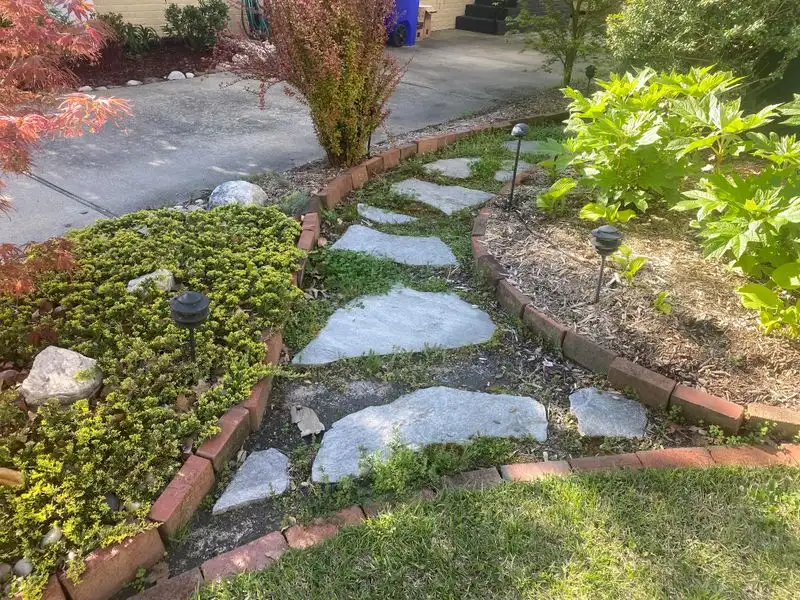
Natural stone pathways invite exploration. Their irregular shapes and textures blend organically with the garden. Stones absorb heat, creating microclimates for heat-loving plants. These paths guide visitors, offering glimpses of hidden garden corners. Use local stone for an eco-friendly choice. The uneven surfaces challenge traditional garden symmetry, emphasizing a more relaxed aesthetic. Paths can lead to seating areas or water features, enhancing the garden’s functionality. The combination of stone and plants brings a rustic charm, encouraging leisurely strolls. This design element celebrates the journey, not just the destination.
Perennial Borders

Perennial borders provide lasting color and structure. Unlike annuals, these plants return year after year, offering reliability. Mix early and late bloomers for season-long interest. Choose perennials with diverse colors and shapes for visual appeal. They require less replanting, saving time and resources. This approach fosters a sustainable garden, reducing waste. Consider the soil and light conditions when selecting plants. Perennial borders adapt to changing climates, proving resilient. Their continuous growth ensures a lively garden through various seasons. This timeless design blends tradition with innovation, making it a garden staple.
Ornamental Grasses
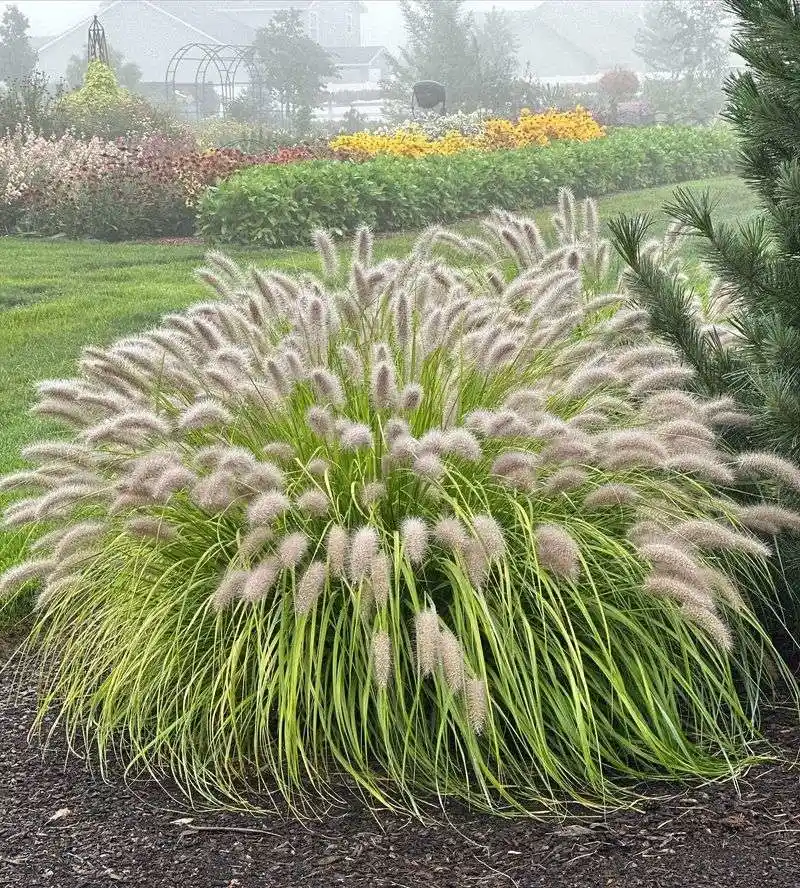
Ornamental grasses introduce movement and texture. Their swaying blades catch the light, creating dynamic shadows. Grasses are drought-resistant, ideal for low-maintenance gardens. They provide shelter for insects and small animals, enhancing biodiversity. Choose varieties with different heights and colors for contrast. They soften garden edges, blending seamlessly with surrounding landscapes. The rustling sound adds an auditory dimension to the garden experience. Grasses thrive in various conditions, proving adaptable and hardy. Their ethereal presence brings a sense of tranquility. This versatile plant choice complements any garden style, adding elegance and grace.

